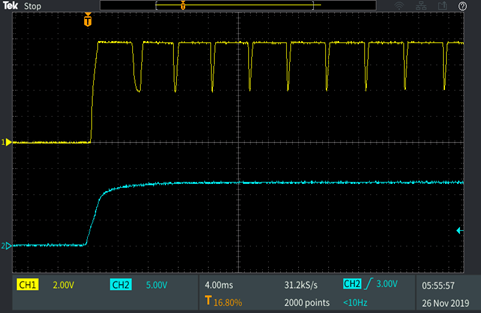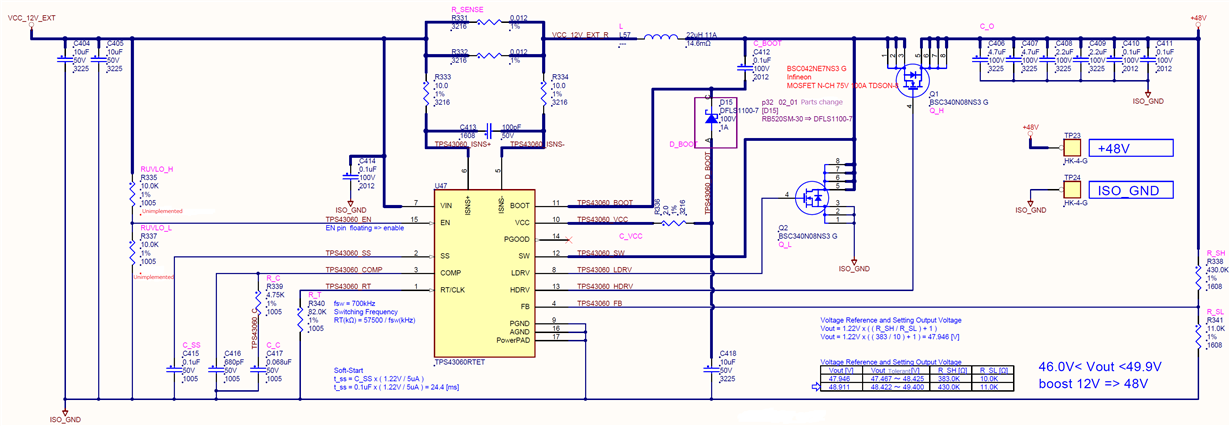Hi support team.
VOUT does not output normally (48V).
The output of VCC-pin does not maintain 7.5V.
CH1: VCC-pin
CH2: VIN 12V
If the capacitor 10uF on the VCC-pin is removed, VOUT (48V) does output.
However, the VCC-pin waveform is further disturbed.
CH1: VCC-pin
CH2: VIN 12V
Is this IC broken?
Please let me know how to normalize the VCC-pin waveform.
Regards,
Dice-K





